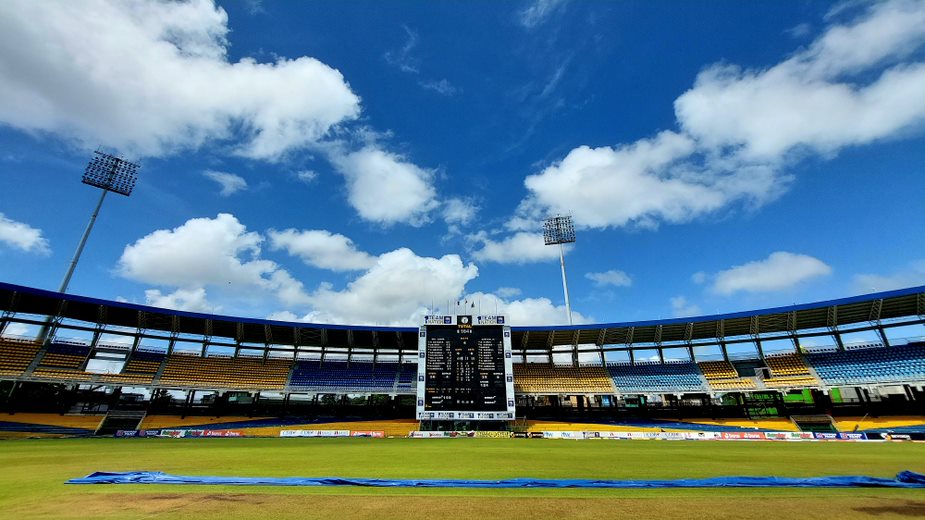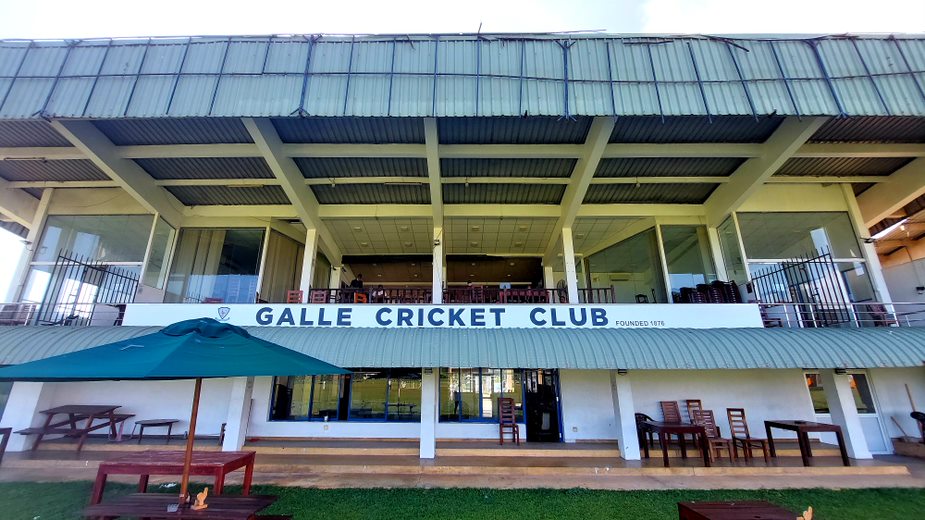SRI LANKA TEST CRICKET GROUNDS
I have long said the best country in which to follow cricket is Sri Lanka, and many of those asking are often taken back, with the immediate response, ‘Why?” in a tone suggesting I must be on drugs. ‘Following’ cricket isn’t just about how much fun you have at the game, it’s a collection of values from the moment you land, which in Sri Lanka is only one place. Colombo!
No matter where the cricket starts or finishes, Colombo is it. Due to Sri Lanka’s size, whatever time you arrive, your hosts or hotel can meet you at the airport and drive you to bed, regardless of where in the country you need to go. Even if they don't meet you, there are pre-paid fixed price taxis from the airport to everywhere.
The longest drive is 6.5 hours to Jaffna in the north or Arugam Bay in the east. Otherwise getting to that first ball in Kandy is just 103km from the airport, Dambulla a casual 128km, Galle a massive 153km, or Colombo itself a paltry 33km.
History suggests, no sooner have you booked flights to Sri Lanka the fixture will be changed. Unlike India (for e.g.) when they flip from Chennai to Delhi resulting in you needing a new flight, in Sri Lanka you simply get your taxi from the airport to another city and enjoy the game.
Once you reach Kandy, Galle, Dambulla, or Hambantota things are easy as they only have one test cricket ground. Playing in Colombo is a different story. To have 5 Test Cricket Grounds is incredible for a small nation that only received Test status in '81. Venues don't fight the MCG for capacity but politics will determine whether you play at the Singhalese Sports Club (SSC), Premadasa Stadium, or P Sara Oval.
Singhalese Sport Club (SSC)
Less than 6km from Colombo Fort Station, on uninspiring Maitland Place, you will happen across Colombo Cricket Club Ground that last hosted Test Cricket in 1987. I’m surprised it hosted any. 200m down the road is Nondescripts Cricket Club, which bore Sri Lankan cricketing giants such as Aravinda de Silva, Ravi Ratnayake, and Kumar Sangakkara, and which shares a fence with Singhalese Sports Club, home of Sri Lanka Cricket.

With only 3 entrances, all on Maitland Place, you can’t get lost trying to get into this relaxed little ground, though if you do get lost, just go to the ‘big’ entrance where the friendliest gatekeepers in world cricket will let you in even if your ticket isn’t for that area. And by area, I mean the grassy embankments or four humble stands, which combine to host just 10,000 people.
If seated in the pavilion, the swimming pool you pass on entry is the best reason to sit there as it is never cool in Sri Lanka. SSC is an easy ground to reach and an easy ground to watch the game. No one seems bothered, though in Sri Lanka you’d be hard pressed to find anyone bothered with anything. The SSC is the most likely venue to play Test Cricket in Colombo, with R Premadasa Stadium the most unwanted.

Ranasinghe Premadasa Stadium
4km from Fort Railway Station you will find the giant of Sri Lanka cricket, Premadasa Stadium. Built in 1986 for one-day cricket, the 35,000 chairs are best suited to the white-ball game. Cram them in for a night of floodlit excitement and send them home without caring who won. Whether you know cricket or not, if you have the chance to experience white-ball cricket here, then do. Sri Lankans know how to celebrate cricket and can introduce another side of happiness to you.

Famous for the brass bands that endlessly tootle through the matches, 5 or more bands play whenever Sri Lanka is hosting. Married with the colour and excitement, you walk away with a sense of appreciation and achievement. Because of its size, you do not want to play test cricket here; it’s just too big for the market. Conversely, you must wonder how England supporters squeezed into P Sara Oval in 2012.

P Saravanamuttu Oval
If you are lucky to see cricket at this quaint, quiet, and quirky test cricket ground, then you are lucky to tour Sri Lanka at the time. P Sara Oval in the rural back blocks of Colombo is 6km from Fort station. If you don’t know where it is, the rickshaw driver won’t know either. Take a bus to Borella Junction, and then a lowly stroll down a quiet dusty road, across the rarely used railway line, to a roundabout with a few shops on the left, and the un-signposted test cricket ground is in front of you.

Inside, you’d be excused for thinking you have time-travelled to Bradman’s days of playing here. Honour boards grace the walls behind the 5-steps terrace of colonial wooden benches that can be moved to suit your viewing pleasure.

The only stand is opposite a grassy steppe that is home to palm trees, horses, and sleepy security guards positioned to throw the ball back, whereas cricket’s most delightful scoreboard sits at fine leg buried within a ‘lost ball’ depth of ivy. If not Test cricket, wish for a tour-game to be played here. It is colonial, village, backyard, school, and professional cricket all rolled into one little oval that is so low-key, no one even knows what the P stands for!

Galle International Cricket Stadium
High on the list of ‘must visit’ test cricket grounds is Galle International Cricket Stadium. If not for the 16th century Dutch Fort that provides one of the game’s most historic backdrops, you’d feign interest coming if not on Sri Lanka’s amazing south coast. When coming to Galle by bus or train, the ground is opposite both stations.

It’s one of the few grounds where you can pop over to the market at the drinks’ break, go to the station to buy a train ticket, or pop to your hotel in the fort for lunch and be back without missing a ball. If you are really quick, scoot to Unawatuna Beach for a dip, and be back without feeling you’ve left, unlike climbing onto the fort ramparts.

The best free seat of any test cricket ground is on the fort walls, from where you get you a skewed beauty of the ground. It looks amazing from on high but really is one of the crappiest test cricket grounds if not for where it is. Galle Cricket Club Pavilion seats 100, one grandstand seats 400, one AC rooms seats 100, with the rest of the spectators housed on temporary platforms, plastic chairs, or flat grassless knolls. It is what it is, a high school ground on a roundabout that occasionally hosts international cricket.
Maybe I am being harsh, but where it is and its reputation as 'one of the world's most picturesque test cricket grounds', it is disappointing. This ground could be breathtakingly spectacular!

Pallekele International Cricket Stadium
When news broke in 2004 that cricket will leave the delights and convenience of Asgiriya Stadium, the tiny Trinity College Ground at the top of the hill, on the edge of Kandy, I was upset. I hate changing history, more so when it is 10km away.
It was a pleasure to walk around the lake and through Kandy to the game each day, but it is equally pleasurable catching the bus to Pallekele where, if not for the top of the floodlights poking above the trees, you wouldn’t know the stadium was there.

Heading through the forested entrance and climbing around to your left, you look into the ground, built into the side of a hill. One sweeping stand at the far end is home to everything you need including shade, whereas a grassy hill everywhere else is only interrupted by the media centre.

It’s an incredibly comfy ground to watch cricket, but they have only gone so far with ‘aesthetics’. If the concession booths were moved off the grass and the embankment ringed with palm trees, the ground would look spectacular whilst offering shade to a few more of the surprising 35,000 it can host. Where do they call come from?

Rangiri Dambulla International Cricket Stadium
With Sri Lanka's Test Cricket Grounds located across the southern monsoon belt, no matter what time of year, you can near guarantee your game will be marred by rain. Enter Rangiri Dambulla International Cricket Stadium. Designed for cricket to be played at any time of year, in keeping with Sri Lankan stadium design the admin / pavilion / media building is big enough to house the United Nations; the rest of the ground one small stand either side of the pavilion, and grassy knolls.

Next to delightful Dambulla Reservoir and Dambulla Rock, the stadium holds 16,800; a whopping 24% of Dambulla’s 72,000 pop. Imagine the size of other test cricket grounds if they housed 24% of the city’s population? Suffice to say, you won’t find it hard buying a ticket.

What you may find hard to buy is a bed with many good hotels and resorts up to 25km away for tourists that flock to Sigiriya Rock. It’s a good thing only short form games are played here as you may be better driving the 75 km from Kandy for a one-off game, unless it rains, which surprisingly still happens in Dambulla.

Mahinda Rajapaksa International Cricket Stadium
The definition of a politically motivated, narcissistic white elephant is Mahinda Rajapaksa Intl. Cricket Stadium. In the absolute boonies, this dust collector sits at the crossroads to nowhere, 40km inland through a social & cultural void from Hambantota, near a tin pot village called Sooriyaweva. The ground is only called Hambantota because it’s easier to say than ‘Sooriyaweva’.

Inconveniently, the closest transport hub is Mattala Rajapaksa International Airport to where no airline flies, not even Mahinda Rajapaksa's defunct ‘Mihin Lanka’. No buses go to the ground, no trains travel this far (yet) from Colombo, and no taxi will take you unless you pay the fare to whence they came, but they won't be there when the game is over.
You need to buy parking, a match ticket and beer all day for the driver, or you will never get home to wherever that may be, as there are no hotels either. Filling up your driver with Lion Lager all day creates yet another travel concern late at night; a 40km white knuckle ride in the darkness to the closest hotel of note, Mahinda Rajapaksa Hambantota Resort (now Shangri-La Golf Resort and Spa).

If you're looking for a bed near the ground, try Ambalantota just past the Mahinda Rajapaksa Port or Mahinda Rajapaksa's home of Kataragama to where the Mahinda Rajapaksa Rail Link from Colombo will stop! There are lots of hotels in the village of Tangalle 70km away, so try the megalopolis of Tissamaharama with its ‘bustling high street of cafes, banks, and kiosks’ as defined in Hambantota’s Commonwealth Games 2018 bid.
Those ill-words helped Hambantota secure the Games as much as the Mahinda Rajapaksa Blank Cheque Department did for securing the president a 3rd term. He simply handballed the presidency to his brother Gotabaya Rajapaksa so the funds kept flowing. Should you ever make it to Mahinda Rajapaksa's vision on the veld, this cricket wasteland can unbelievably accommodate 35,000 unicorns and one Mahinda Rajapaksa.


